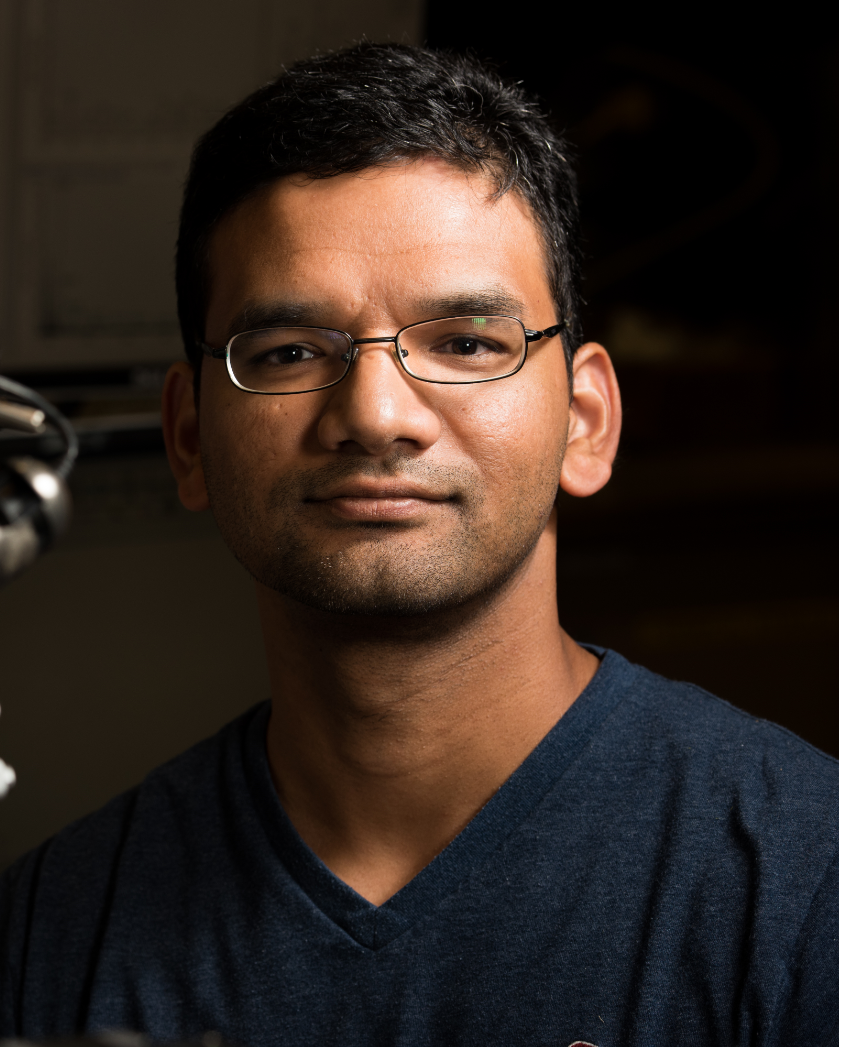 Swarup China, the Integrated Research Platform leader for Terrestrial-Atmospheric Processes at the Environmental Molecular Sciences Laboratory (EMSL) of Pacific Northwest National Laboratory (PNNL), is the 2024 winner of the Early Career Award for Outstanding Scientific Achievement at the Advanced Light Source (ALS). His selection, by members of the ALS Users’ Executive Committee (UEC), recognizes his work in advancing the understanding of atmospheric aerosols and biological particles through micro-spectroscopic analyses and chemical imaging at the ALS.
Swarup China, the Integrated Research Platform leader for Terrestrial-Atmospheric Processes at the Environmental Molecular Sciences Laboratory (EMSL) of Pacific Northwest National Laboratory (PNNL), is the 2024 winner of the Early Career Award for Outstanding Scientific Achievement at the Advanced Light Source (ALS). His selection, by members of the ALS Users’ Executive Committee (UEC), recognizes his work in advancing the understanding of atmospheric aerosols and biological particles through micro-spectroscopic analyses and chemical imaging at the ALS.
What is the focus of your research?
I’m an atmospheric scientist, so I look at atmospheric particles to understand the detailed processes. We really need to understand the chemistry of those particles better, and one technique cannot provide all the information.
What led you to this field?
I’m from India originally, and we have a big issue of air quality. I always wanted to learn about that and help improve conditions in the future. I was trained as an engineer in my bachelor’s, and when I moved to my master’s program at UNLV, I was doing environmental engineering with a focus on air quality. That led to my interest in atmospheric science, and my PhD at Michigan Technological University was in atmospheric physics work. Then, I moved to PNNL, where I’ve been doing atmospheric chemistry. I’m lucky to have this opportunity to see both the physics and chemistry sides of atmospheric science.
How did you become an ALS user, and which beamlines do you use?
I was introduced to the ALS in 2015 when I came to PNNL as a postdoc working with Alex Laskin, who is also an ALS user. I have been using Beamlines 5.3.2.2 and 11.0.2.2, both for scanning transmission x-ray microscopy (STXM). At 11.0.2.2, we had an in situ microreactor that my LBNL mentor, Mary Gilles, built. She set the stage for a lot of the things we could do at the ALS, because we didn’t have to do our STXM experiments in dry conditions. The microreactor mimicked environmental conditions.
This complements the capabilities we have at Environmental Molecular Sciences Laboratory. We have single-particle analysis, but that is challenging for analyzing carbon, nitrogen, and oxygen. Because these are lighter elements, electron microscopy does not work very well. That’s why STXM comes in very handy, where we can look specifically at carbon, nitrogen, and oxygen.
What developments would you like to see in your field?
We’re always trying to do real-world environmental conditions, but the technology needs to advance so that we can tune the temperature, pressure, or other conditions, and process the data faster. I’d also like to see advancements in automation, to help with experiments that are sometimes very challenging and time consuming.
What role has mentorship played in your career?
My initial plan was to get a job after my master’s, but then I had a very good mentor for my master’s studies. I was able to publish two papers for my master’s, and that really motivated me to pursue research as a career. I had a phenomenal scientist as a mentor during my PhD program. He taught me not only the research, but research ethics, too. And then, my postdoc supervisor was a very great resource, and always motivated me, along with Mary Gilles. You know, Alex and Mary have been working together on STXM since 2000 or something, and they were the ones who introduced me to STXM.
What I learned from them, that’s what I’m trying to do for my team now. We have five or six team members now who are proficient in running experiments and also doing analysis. So, a lot of credit actually goes to them, and the science we achieved would not have been possible without them. I love working with that team.
What advice do you have for people starting out in their careers?
I always say that what is really important is the motivation and the passion for your research. When you do something you’re passionate about, you enjoy the work you are doing. It’s not necessary to choose a field that other people think is more exciting. You should choose what you think is more exciting.
The ALS Early Career Award was established in 2024 to recognize significant scientific contributions from early-career investigators who have performed original and independent research at the ALS. The 2024 ALS Early Career Award is sponsored by Lightsources.org.